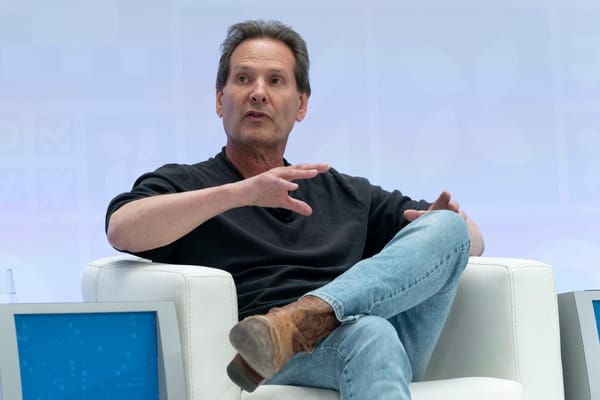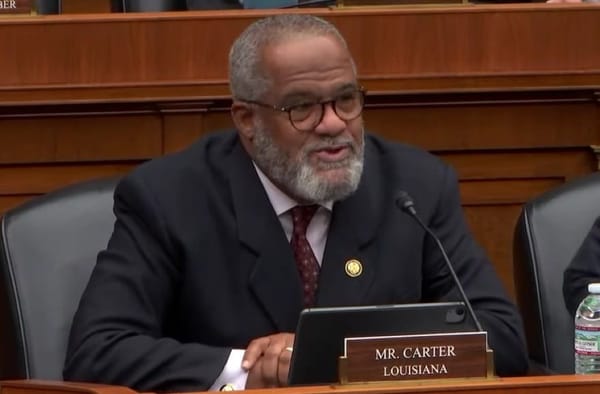Watchdogging Government From Below: A Look at the Digital Transparency Movement
NEW YORK, June 24 – The final breakout panel of the Personal Democracy Forum examined the state of political watchdogging in the Internet age. Ellen Miller of the Sunlight Foundation said she sees web and its access to information as fundamental to the recent movement for political transparency.
Drew Bennett
Blog Entries
The final breakout panel of the Personal Democracy Forum examines the state of political wachdogging in the Internet age. The panel is led by Ellen Miller of the Sunlight Foundation, who sees the web and its access to information as being fundamental to the recent surge in the movement for enhanced political transparency. She believes that watchdogging our public officials becomes easier when citizens can mark up a google map with earmarks received by various localities and can keep a wiki detailing the fine print of the most impactful legislation.
Ellen’s panelists include David Stephenson, Matt Stoller, and Mark Tapscott and she presents them with four big questions about watchdogging in the digital age:
1) Why is the movement for political transparency flourishing now?
2) Do the left and the right agree on the movement’s core principles?
3) What are the best practices for facilitating political transparency?
4) What are currently the most prominent government efforts to improve political transparency?
Beginning with David Stephenson who points to the importance of data graphics in providing transparency. He presents a mash-up Google map of pothole reports for Washington, DC…which was constructed by a user located in Keane, New Hamphire. Here, relatively difficult to parse, though publicly available, data has been presented in such a way (on a map) that it becomes highly useful to users (dodging potholes on their way to work). Another example David presents is the Gapminder project, which presents massive global data on poverty and other indicators and utilizes animated visual presentations to show changes over time.
David reviews a few keys to improving transparency in government and watchdogging through data graphics. First, he stresses the importance for immediate release of data, even real-time releases and catalogs. Following the release of raw data, users need the freedom and technologies to utilize that data and creatively and productively enhance it through data graphics and visualizations. But he also warns that the genie is out of the lamp and that countless mashups and data visualizations will bloom. The government may not like all of them, but “hopefully the quality of the debate will be a little more focused and a little more fact based.” Greater transparency and accountability is one result. Another is reaching optimal efficiency and gaining new perspectives on issues through broader exposure to data.
Matt Stoller, co-founder of Open Left, is next and wants to address the disparity between rhetoric (on the part of both Left and Right) and reality in DC and the need for political watchdogging to fill that gap. Matt finds a lack of criticism within each party for legislative actions that clearly go against the wishes of many of the party’s constituents. The space where politicians should be criticizing the party leaders might be filled by citizens with transparent access.
Mark Tascott, editor of The Examiner newspaper, harkens back to the beginning of government transparency efforts during the end of the Clinton presidency. Mark is pleased that these effort continued into the Bush administration and cites the creation of usaspending.gov as one of the most revolutionary pieces of legislation in recent memory. No matter what side of the aisle you’re on, you’ll agree that transparency is fundamental to good governance, according to Mark. He believes that the Internet has given us unprecedented tools for empowering individuals and groups to render obsolete the need for mass government.
The presentations from the panelists inspire a vibrant audience-focused discussion on data collection. Some of the key reactions are below:
*We need better data in order to have a better democracy. It can be done efficiently.
*We need better data in order to better govern and protect.
*What data should the government be publishing?
*Mark: all of it, it’s ours, but we have to keep the focus on transparency and avoid government waste.
*Audience: More transparency could make public aware of government resource shortages.
*David: This requires government will, strong leaders like Adrian Fenty and Martin O’Malley are showing it.
*Mark: But it needs to move faster, perhaps after election.
Many panelists and audience members seemed to agree that transparency is a “trans-partisan” issue that both parties can unite around: more transparency is a good thing and as David Stephenson remarked, “Coburn-Obama says it all!”
Personally, I’m a bit skeptical that transparency is always a non-partisan issue. Take the work right here, of BroadbandCensus.com. The Census had to be created because the Government data on broadband deployment is insufficient. Many policy makers have agreed that the data is deficient for a long time, yet slow-moving reforms at the FCC still are not enough. Meanwhile, speaker after speaker at this conference have stated that broadband deployment must be expanded. Surely, many would agree that we need to know where broadband isn’t before we can begin to expand it. But should the government be responsible for collecting extensive data from resistant telecommunications firms on their deployment?
A broadband census would ultimately provide more transparency and inform better policy, but unfortunately politics is one of many things getting in the way of achieving this. But I suppose if partisan divides and bureaucratic foot-dragging get in the way of transparency, then that’s where citizens and technology need to create an end-around and that’s exactly what Broadband Census is.










Member discussion